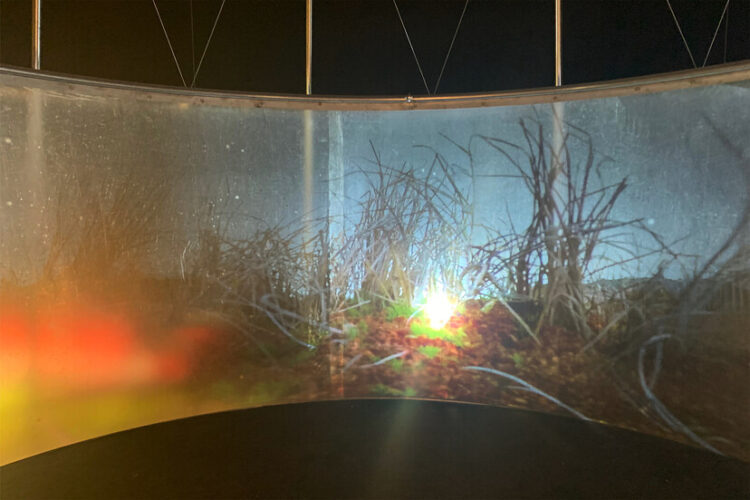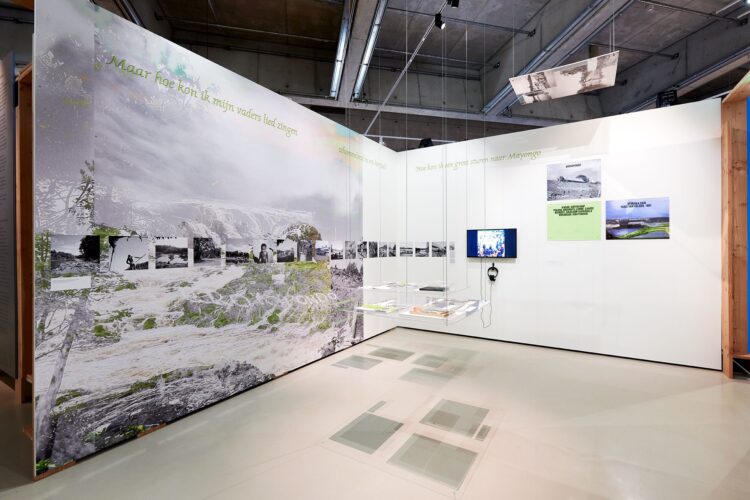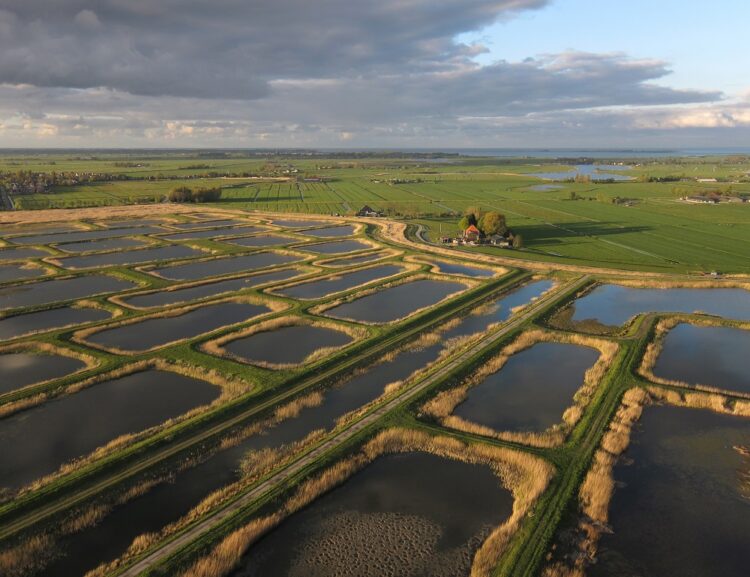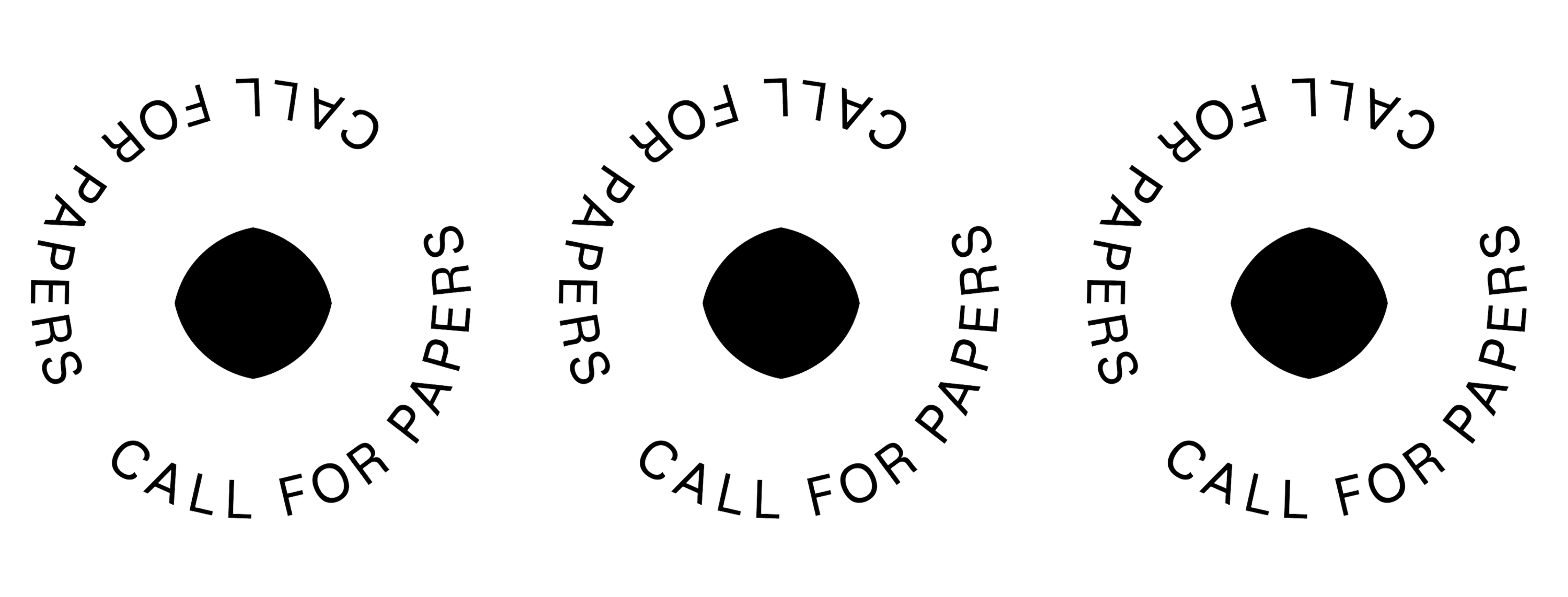Guest editors: Suzie van Staaveren and Robbie Schweiger
Deadline: 15 April 2024
Published: November 2024
We are thrilled to announce the call for papers for the upcoming issue of Kunstlicht dedicated to the ecological and discursive potential of swamps within artistic practices and design cultures.
Recent projects, such as Turba Tol Hol-Hol Tol presented at the Chilean Pavilion at the 59th Venice Biennale in 2022 and Nomeda and Gediminas Urbonas’ retrospective Partially Swamped Institution at the Vilnius National Gallery of Art in 2023, oppose dominant interpretations and representations of the swamp as hostile, underdeveloped, and unprofitable and reveal the ongoing (post)colonial and climate crimes that are connected to these kinds of landscapes. With organic and archival materials and immersive multisensorial installations, the projects point to the potential of swamps as complex ecosystems of human and non-human coexistence and as political agents able to reverse colonial logic and provide bases for community-based activism and resistance.[1]

For this issue of Kunstlicht, we invite you to think with us and imagine the potential of swamps through art and design practices. What insights does studying (the history and the representation of) swamps with their many human and non-human inhabitants bring? How do these transitional areas between land and water afford other ways of physical and ethical connections to the environment in a time of deep ecological crisis and social injustice? What can artistic practices and design cultures learn from swamps (as spaces or metaphors) in order to create or imagine other ways of being in the world? And how can art practices and design cultures contribute to raising awareness of the swamp’s potential?
Swamp, wasteland
As was shown in the above-mentioned exhibitions, swamps have often been (wrongfully) interpreted and represented as negligible, superfluous, hostile, underdeveloped, and nonprofitable spaces. A word that is often used when talking about swamps is ‘wasteland’, a term articulated by philosopher John Locke in his Second Treatise of Government (1690).[2] In his theory of property, which counts as a cornerstone of capitalism, Locke argued for certain ways of using land – transforming wastelands into ‘productive’ areas, thereby legitimising capitalism and settler colonialism. Being considered a wasteland often led to the drainage and exploitation of swamps, both in the European mainland as well as in European colonised territories. Similar categories – waste and productivity by cultivation – were also applied to the human inhabitants of these landscapes: “associated with wildness, wilderness, and savagery […] the category of wasteland also defined who would and who would not become most vulnerable to dispossession and/or enclosure.”[3] The drainage, exploitation and sometimes flooding of swamps, the latter being the case after the completion of the Afobaka dam in 1964 in Suriname, had disastrous consequences for the complex ecosystems of these transitional areas between land and water and their human and non-human inhabitants. As a current exhibition at the Museum Nieuwe Instituut, Rotterdam, shows, the effects of the flooding in Suriname are still felt today as the event led to the mass displacement of the Maroons, who are the descendants of Africans enslaved during colonial times. Starting in the 18th century, they rebelled against their oppression, fled their captors, and formed autonomous communities in the inland swamps.[4]

Only in more recent decades has the ecological and discursive potential of swamps resurfaced more clearly. Swamps are not only living waters full of interdependent and interconnected life forms, category-denying and fugitive spaces for communities like the Maroons, they also question colonial, capitalist and (neo)liberal ideas of land use and ownership. In that vein, swamps can function as what decolonial scholar Brenna Bhandar describes as a “new political imaginary of property in which freedom is connected to shared practices of use and community rather than individual possession.”[5]
However, the awareness of the importance and potential of the swamp as an ecological buffer zone in times of climate crisis was again founded on the capitalisation and colonisation of swamps. As some types of swamps (peatlands and mangroves) are highly efficient at carbon storage they too become tradable, exchangeable and profitable goods. Large companies that, for example, operate in aviation or the fossil fuel industry, use these landscapes for calculated carbon offsetting and compensation, with which they buy the right to do harm elsewhere. It is becoming increasingly clear that the idea of carbon offsetting and compensation is no solution to the climate crisis. Instead, it is part of the same colonial, capitalist and (neo)liberal ideas of land use and ownership that keep harming ecosystems and displacing communities. But are there other ways?
In his book The Gift (1983), scholar Lewis Hyde proposes an alternative to the capitalisation of nature and Lockean ways of land use and ownership in order to establish ecological regeneration. According to Hyde, humans should engage in a gift relationship with nature, which could take the form of rituals that connect and exchange with nature. This awareness of interspecies interconnectedness and interdependence, which Hyde illustrates with pre-Colombian and pagan hunting, harvest and sacrificial rituals, recognises our involvement in and reliance on ecological regeneration as it tends to view nature as an extension of ourselves rather than ‘a stranger or alien available for exploitation’.[6] Consequently, gift exchange inherently restrains the destruction of natural resources; through it, we refrain from ecological degeneration unless we knowingly endanger ourselves in the process. Gifts, according to Hyde, are works of art. Conversely, it can be argued that artworks are gifts. They foster trust among strangers and pave the way for new possibilities and potential futures.[7]
Informed by his Yoruba ancestry and inspired by the Maroons (not only in Suriname but all over the Americas), academic, poet and philosopher Bayo Akomolafe is thinking of ways to escape the capitalist and colonial logic in dealing with the climate crisis. Instead of action and productivity (fighting and solving), he advocates for a more humble approach of: dwelling on, slowing down, listening, and witnessing what has occurred.[8] He describes this approach as a form of “climate grief,” a process which does not look for a solution or way out, but instead calls for reflection and rituals of mourning and caring to find a way to live with the ecological losses. According to Akomolafe, it is time to “hack the system” by shaping spaces and communities where complexity, interspecies interdependence, and relationality take precedence over human domination and productivity. Just like swamps, Akomolafe sees art as such a space and community. Art as a space for questioning and imagination as resistance to productivity and capitalist and colonial logic. Art as a space of “creative surrender,” where physical and ethical connections to the environment can be explored.[9]
Life Compensation Lottery
The paragraphs above are the product of the research conducted for the Life Compensation Lottery that incites this call for papers. Life Compensation Lottery will be presented in Amsterdam in 2025, and is initiated by artist Suzie van Staaveren and curated by Robbie Schweiger (who are the guest-editors of this issue of Kunstlicht). The project revolves around the organisation of a postcode lottery amongst people living around the Volgermeerpolder, a drained former swamp consisting of peat that over the course of the 20th century was turned from waste into productive land resulting in a heavily polluted area bordering Amsterdam-Noord and the municipality of Waterland.[10] All residents living in this area participate automatically and for free and have a chance to win a unique prize: carbon compensation for their entire life. After the draw, the winner’s carbon emissions will be estimated as accurately as possible by a climate scientist and compensated by restoring local peatland on top of the contamination at the Volgermeerpolder. In cooperation with various local interest groups, a performative public programme will be organised in the Volgermeerpolder in the form of an award ceremony of the lottery and the unveiling of a monument designed by Suzie van Staaveren. This permanent artwork will have multiple functions: it will be the connection between the life of the winner and the growing peatland at the Volgermeerpolder, it will be a memorial to the environmental damage caused in the area, and it will function as a basis for community-based activism and the creation of rituals that connect and exchange with this landscape.

Although Life Compensation Lottery takes carbon offsetting as its starting point, it simultaneously criticises this phenomenon. It addresses and makes visible the shortcomings and complexities of carbon offsetting and compensation while also engaging in community-based activism and ecological regeneration. Compensation is bureaucratically complicated and involves the commodification of nature. By highlighting the limitations and ethical issues surrounding carbon offsetting, it challenges the capitalist and colonial logic of buying compensation for environmental damage. By framing compensation as something won by chance and luck through a lottery system, the project disrupts the idea of compensation as a transactional process. The project connects the compensation to a specific geographic area and a human life (that of the winner), emphasising that offsetting is not universally applicable and that alternative physical and ethical connections to the environment must be found.
We invite scholars, artists, ecologists, climate activists and practitioners from various disciplinary backgrounds and from all stages in their academic, creative, professional or resistance practice to elaborate on the issues raised and submit a proposal for essays, interviews, poems and other poetic and experimental texts, prose, playlists, and visual works.
Proposals (200-300 words) with attached résumés and related image material can be sent to redactie@tijdschriftkunstlicht.nl by no later than April 15, 2024. Selected contributors will be notified shortly thereafter and invited to write a 2,500/3,000-word essay (excluding (foot)notes), or to submit an artistic contribution.
Please note: Contributors who publish in Kunstlicht will receive two complimentary copies. Kunstlicht is a volunteer-run academic journal and is unable to provide an author’s honorarium. Three years following publication, essay contributions will be uploaded to the freely accessible online archive.
[1] Valentina Sansone, “Nomeda & Gediminas Urbonas Embrace the Swamp,” Frieze, Issue 239 (2023): Nomeda & Gediminas Urbonas Embrace the Swamp | Frieze; Helene Romankin, “Field Notes: “Turba Tol Hol-Hol Tol.”Chilean Pavilion. 59th Venice Biennale,” e-flux Education (2022): Field Notes: Helene Romakin on “Turba Tol Hol-Hol Tol,” Chilean Pavilion, 59th Venice Biennale – e-flux Education.
[2] John Locke, Second Treatise of Government, Ed. C. B. Macpherson (Indianapolis: Hackett, 1980), 20–22.
[3] Judy Whitehead, “John Locke and the Governance of India’s Landscape: The Category of Wasteland in Colonial Revenue and Forest Legislation,” Economic and Political Weekly, Vol. 45, No. 50 (December 11–17, 2010): 83.
[4] “Soengoe Kondre / Submerged Heritage,” Nieuwe Instituut (2023): Soengoe Kondre / Submerged Heritage (nieuweinstituut.nl).
[5] Brenna Bhandar, Colonial Lives of Property: Law, Land, and Racial Regimes of Ownership, (Durham: Duke University Press, 2018): Duke University Press – Colonial Lives of Property (dukeupress.edu).
[6] Lewis Hyde, The Gift: Creativity and the Artist in the Modern World, (New York: Vintage, 2007): 28.
[7] Ibidem.
[8] Ayana Young (host), “Dr. Bayo Akomolafe on Slowing Down in Urgent Times,” for the wild (podcast) (2020): Dr. BAYO AKOMOLAFE on Slowing Down in Urgent Times /155 — FOR THE WILD.
[9] Ibidem.
[10] The Volgermeerpolder has a special – tainted – history. This former swamp or ‘wasteland’ was mined for peat from the early 1900s, after which it was put to use as a landfill where huge amounts of chemical waste were illegally dumped. After this came to light in the 1980s, the contaminated area was covered with a thick plastic film. Since 2006 the Volgermeerpolder has been undergoing a transformation where sawa’s (flooded fields surrounded by narrow dikes) are created to redevelop a peat landscape within these sawa’s on top of the plastic film. Paradoxically, the waste and pollution has turned the area into a swamp that can no longer be treated as wasteland in a Lockean sense and as exchangeable and tradable. In addition, the area has also become a basis for community-based activism, seeking to raise awareness for the history of the Volgeermeerpolder and the safety of local (future) residents.

